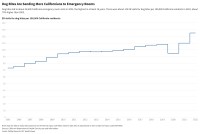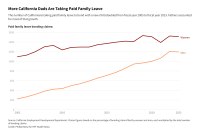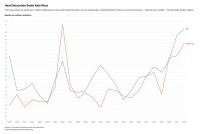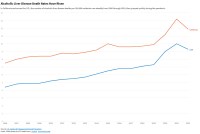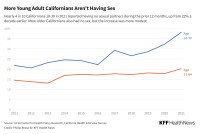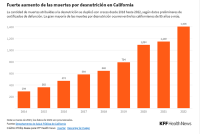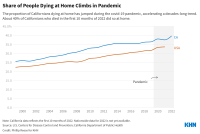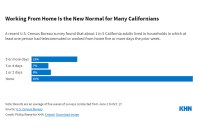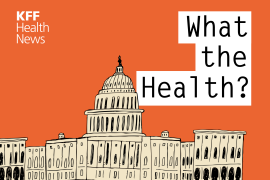Con el verano hay más mosquitos y, temen oficiales, más casos de dengue
El año pasado se reportaron alrededor de 3.700 nuevas infecciones por dengue en Estados Unidos, frente a las 2.050 de 2023, según los Centros para el Control y Prevención de Enfermedades.
As Mosquito Season Peaks, Officials Brace for New Normal of Dengue Cases
In recent years, locally acquired dengue cases have appeared in California, Florida, and Texas, parts of the U.S. where the disease isn’t endemic. Health and vector control officials worry that with climate change and the lack of a vaccine, dengue will take hold in a larger swath of North America.
Mental Health and Substance Misuse Treatment Is Increasingly a Video Chat or Phone Call Away
More Californians are getting mental health or substance use disorder treatment online or over the phone than in person, according to a KFF Health News analysis of UCLA’s latest California Health Interview Survey. But the telehealth experience isn’t always positive.
Thought Inflation Was Bad? Health Insurance Premiums Are Rising Even Faster
California businesses saw employees’ monthly family insurance premiums rise nearly $1,000 over a 15-year period, more than double the pace of inflation. And employees’ share grew as companies shifted more of the cost to workers.
More Californians Are Freezing to Death. Experts Point to More Older Homeless People.
Hypothermia deaths have risen in California and across the nation. Experts point to the growing number of older, unsheltered homeless people as a key factor in the trend.
Más californianos están muriendo por el frío. Gran parte son personas mayores sin techo
La hipotermia causada por la exposición a bajas temperaturas fue la causa principal, o que contribuyó, a la muerte de 166 californianos el año pasado, más del doble que hace una década
Breast Cancer Rises Among Asian American and Pacific Islander Women
Asian American and Pacific Islander women once had a relatively low rate of breast cancer diagnoses. Now, researchers are scrambling to understand why it’s rising at a faster pace than those of many other racial and ethnic groups.
Un análisis de KFF Health News-Associated Press halló que los hombres latinos homosexuales y bisexuales representan una proporción cada vez mayor de nuevos diagnósticos e infecciones, lo que demuestra que los están dejando atrás en la lucha contra el VIH.
Young Gay Latinos See Rising Share of New HIV Cases, Leading to Call for Targeted Funding
Since being diagnosed with HIV in 2022, Fernando Hermida has had to move three times to access treatment. A KFF Health News-Associated Press analysis found gay and bisexual Latino men account for a fast-growing proportion of new diagnoses and infections, showing they are falling behind in the fight against HIV.
A Record Number of Californians Are Visiting Emergency Rooms for Dog Bites
There were nearly 50,000 emergency room visits for dog bites in California in 2022. The rate of such visits per capita is up about 70% since 2005.
Dads Drive Growth in California’s Paid Family Leave Program
The number of men in the state taking paid family leave to bond with a new child has risen nearly 20% since the start of the pandemic.
Heat-Related Deaths Are Up, and Not Just Because It’s Getting Hotter
Excessive heat contributed to 1,670 deaths nationwide last year, according to federal data — the highest rate in at least two decades. An increase in drug use and homelessness, along with hotter temperatures, were among the reasons.
Consumo excesivo de alcohol durante la pandemia eleva muertes por enfermedad hepática alcohólica
Las ventas de alcohol aumentaron durante la pandemia, con saltos especialmente grandes en el consumo de licores.
Excessive Drinking During the Pandemic Increased Alcoholic Liver Disease Death Rates
The number of Californians dying from alcoholic liver disease rose dramatically in the last decade, sped by the pandemic.
Por qué los adultos jóvenes tienen menos sexo que el que tuvieron sus padres
La cantidad de adultos jóvenes que no tienen relaciones sexuales ya estaba aumentando antes de que covid-19 hiciera que las citas fueran más difíciles y riesgosas.
Young People Are Having Less Sex Than Their Parents Did at Their Age. Researchers Explore Why.
The percentage of young adults not having sex was rising even before covid made dating harder. Data and research suggest economic precarity, technology, and the warping effects of porn on sexual attitudes may play a role.
Aumenta el número de californianos mayores que muere por desnutrición
Las muertes atribuidas a la desnutrición aumentaron más del doble, de unas 650 en 2018 a aproximadamente 1,400 en 2022, según datos preliminares de certificados de defunción del Departamento de Salud Pública estatal.
The Rate of Older Californians Dying of Malnutrition Has Accelerated
Californians 85 and older are especially susceptible to malnutrition. They accounted for almost three in five malnutrition deaths in the state last year.
More Californians Are Dying at Home. Another Covid ‘New Normal’?
The proportion of Californians dying at home, rather than in a hospital or nursing home, accelerated during the pandemic, a trend that has outlasted the rigid lockdowns linked to the initial shift.
A Work-From-Home Culture Takes Root in California
New U.S. Census Bureau data shows a large segment of Californians are working from home for part or all of the week. Researchers say the shift will ripple through the broader economy in ways big and small.










